Medical Sciences
UNDP’s Collaborative Endeavors to Confront HIV/AIDS, Paving the Way for a 2030 Global Health Transformation

HIV/AIDS Awareness Beyond 2023 A Call to Action
World AIDS Day, observed on December 1, 2023, carries profound historical significance in the ongoing battle against HIV/AIDS. In 1983, activists crafted the Denver Principles manifesto, rejecting the portrayal of individuals with HIV as mere victims and laying the foundation for the Greater Involvement of People with HIV (GIPA) principle.

RELATED ARTICLE World AIDS Day 2023
GIPA
The Greater Involvement of People Living with HIV (GIPA) is a cornerstone of the OHTN network, uniting individuals with HIV, community-based agencies, healthcare providers, policymakers, and researchers. Our collective mission is to catalyze positive transformations in the lives of those living with or at risk of HIV. By amassing data and evidence, we gain insights into challenges and solutions, fostering a comprehensive understanding. Central to our approach is recognizing the indispensable role of individuals with HIV within our network. Their knowledge provides a nuanced perspective, shaping effective and feasible solutions. Upholding the right to self-determination, we empower people with HIV to influence decisions affecting their lives. The GIPA Staff Engagement Program at OHTN ensures that both HIV-positive and HIV-negative staff receive training and support, fostering a supportive work environment while respecting individual privacy and autonomy regarding HIV status disclosure.
RELATED ARTICLE The Greater Involvement of People Living with HIV (GIPA)

What is HIV
HIV, or human immunodeficiency virus, is a pathogen that assaults the body’s immune system. Left untreated, HIV can progress to AIDS, or acquired immunodeficiency syndrome, and currently lacks an effective cure, persisting throughout a person’s life. However, with appropriate medical care, the impact of HIV can be managed. Those receiving effective treatment can lead prolonged, healthy lives while safeguarding their partners from transmission.

Origin of HIV
HIV in humans originated from a chimpanzee variant in Central Africa, likely transmitted to humans during the late 1800s when humans came into contact with infected chimpanzee blood while hunting for meat. The chimpanzee virus, known as simian immunodeficiency virus, gradually spread across Africa and subsequently to other parts of the world, including the United States since at least the mid to late 1970s.

How do I know if I have HIV? The sole method to ascertain one’s HIV status is through testing, enabling informed decisions to prevent transmission. Many HIV tests are quick, free, and painless.
Symptoms
While flu-like symptoms may manifest 2 to 4 weeks post-infection for many individuals, having these symptoms alone does not confirm HIV. Some may remain asymptomatic. Testing is the only definitive way to determine HIV status.
Stages of HIV
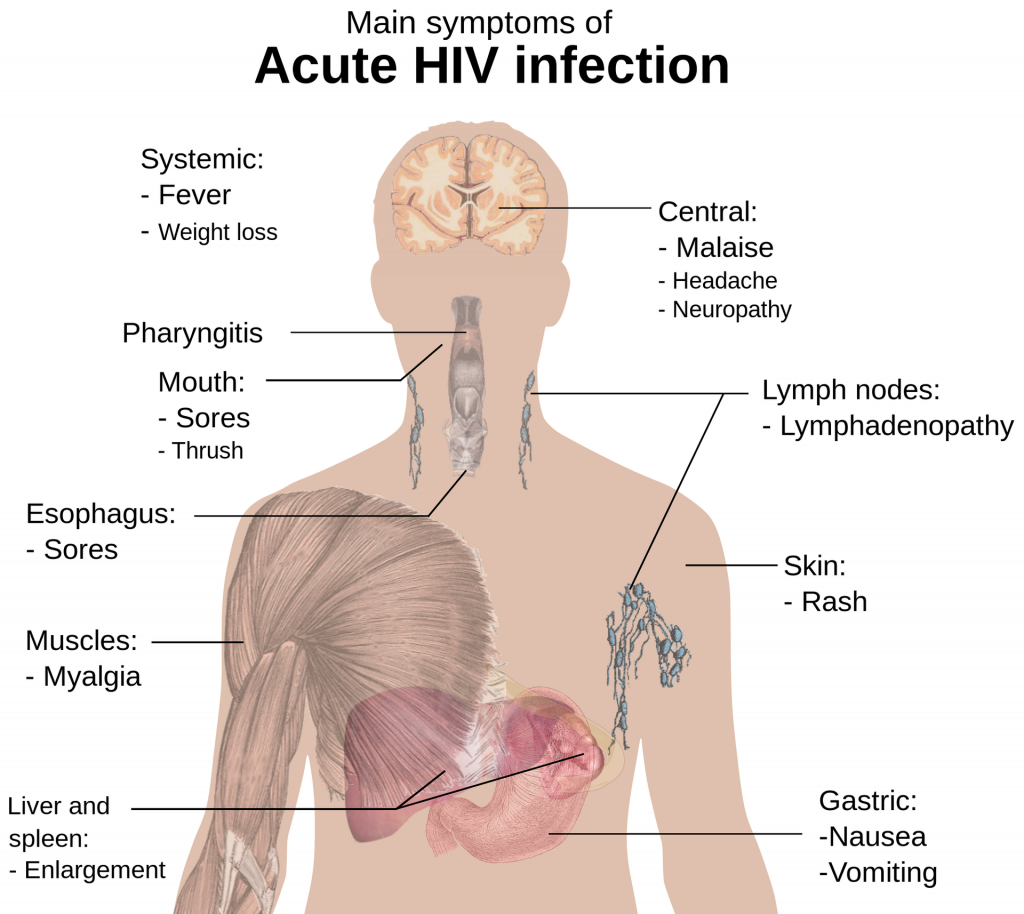
Untreated HIV typically progresses through three stages. With advances in treatment, progression to Stage 3 (AIDS) is less common. Stage 1 involves acute HIV infection, characterized by high viral load and flu-like symptoms. Stage 2, or chronic infection, may be asymptomatic, with HIV persisting in the body. Stage 3, AIDS, represents the most severe phase, marked by a compromised immune system, increased viral load, and susceptibility to opportunistic infections. With HIV treatment, progression to Stage 3 can be prevented, enhancing overall prognosis
RELATED ARTICLES Stages of HIV infection
This day transcends conventional awareness campaigns, seeking to disseminate precise information on HIV transmission, symptoms, and treatments while dismantling associated stigmas. The essence of AIDS, the advanced stage of HIV infection causing severe immune system damage, is crucially delineated.

In the United States, meticulous HIV medication adherence prevents the majority from progressing to AIDS. Progression to AIDS is marked by a CD4 cell count dropping below 200 cells/mm3 or the manifestation of opportunistic infections, emphasizing the significance of timely HIV medication initiation.
World AIDS Day’s profound impact lies in addressing global challenges, with over 35 million lives claimed by HIV/AIDS, necessitating continued accessibility to antiretroviral treatments. Efforts against stigma are pivotal, bolstering testing and treatment. The day urges HIV testing, symbolized by the red ribbon, and supports initiatives like self-testing and the HIV/AIDS benefit program.
Antiretroviral treatment advancements are evident, yet challenges persist, with AIDS claiming lives every minute in 2022. Countries like Botswana and Zimbabwe, adopting community-centric approaches, exceed testing and treatment targets, reflecting notable progress.
PEPFAR A Global Commitment to HIV/AIDS Pandemic Control

PEPFAR, the U.S. President’s Emergency Plan for AIDS Relief, stands as the world’s largest commitment to combating the HIV/AIDS pandemic. Established in 2003, it operates in over 50 countries, saving lives, preventing infections, and contributing to global health security.
Overview
PEPFAR, backed by bipartisan support across ten U.S. congresses, has invested over $100 billion in the global HIV/AIDS response since 2003. With transparent and accountable assistance, it has saved over 25 million lives and prevented millions of HIV infections, showcasing the transformative potential of American foreign aid.
Strategic Approach
Leveraging a whole-of-government approach, PEPFAR is managed by the U.S. Department of State’s Bureau of Global Health Security and Diplomacy. Its priorities revolve around progress, evidenced by the significant shift from a dire HIV diagnosis to vibrant lives. Data-driven policies, targeted population outreach, and strategic partnerships amplify its impact.
Impact Highlights
PEPFAR’s achievements include the transformation of HIV from a death sentence to a manageable condition, with 25 million lives saved and countless infections prevented. The program’s influence extends beyond HIV control, strengthening health systems in partner countries.
Future Outlook
With a new five-year strategy announced in December 2022, PEPFAR remains committed to fulfilling America’s promise to end the HIV/AIDS pandemic by 2030. Emphasizing collaboration and adaptability in the face of emerging health threats, the strategy cements PEPFAR’s role as a key player in global health and disease control.
READ MORE INTERESTING ARTICLES Regenerative Surgery A Comprehensive Innovation by Stem Cells in Face and Eye Transplantation
PEPFAR’s journey reflects the power of international collaboration, demonstrating that compassion, accountability, and strategic partnerships can bring about transformative change in the global fight against HIV/AIDS. As it continues its mission, PEPFAR stands as a testament to the positive impact of sustained dedication and cooperation on a global scale
UNDP‘s collaboration with key partners amplifies support, exemplified in legal aid for LGBTQI+ organizations in Burundi and sustaining HIV treatment in Sudan during conflicts. Decriminalization efforts face obstacles, but UNDP’s SCALE initiative targets 10-10-10 objectives, emphasizing the removal of punitive laws hindering HIV responses.

Acknowledging a funding gap for HIV prevention programs, there’s an urgent need to increase funding and prioritize evidence-based prevention and treatment. As the 75th Anniversary of the Universal Declaration of Human Rights approaches, nations are obligated to advocate non-discriminatory laws and gender equality, fostering robust community responses.
UNDP, as part of the United Nations family, remains steadfast in empowering communities, especially those affected by HIV, aligning with the mission to eradicate AIDS as a public health threat by 2030.
Veterinary News
Blue tongue Alert: Norfolk Livestock Farmers Navigate New Challenges

Expanding Control Zones: Norfolk’s Battle Against Blue tongue Outbreak
Norfolk’s livestock farming community faces a heightened challenge as the bluetongue control zone expands in response to new cases of this potentially fatal animal disease. Bluetongue, affecting ruminants such as cattle, sheep, goats, deer, and camelids, has raised concerns after the confirmation of two infected cattle on a holding near Norwich. The total number of cases in the county has now reached 21 since the initial discovery on a Cantley farm in the Broads on December 8, signaling the need for increased vigilance and control measures.
RESOURCED ARTICLE Norfolk bluetongue control zone extended amid new cases

The regulatory authority in charge of such matters, the Department for Environment, Food & Rural Affairs (Defra), recently confirmed the extension of the temporary control zone (TCZ) in response to the latest developments. This 10-kilometer zone was initially established to facilitate focused surveillance efforts and restrict livestock movements, aiming to prevent the disease’s further spread. All preceding cases were contained within the TCZ, but the most recent instances involved animals grazing just outside the zone during a high-risk period. Consequently, the TCZ’s boundaries have been adjusted, extending it toward Norwich to address this evolving situation effectively.
An interesting departure from previous protocol is the decision not to cull the infected animals this time. Defra has opted for an alternative approach, restricting these animals at their current locations and implementing disease mitigation measures. This strategic shift is attributed to a recent reduction in midge activity, diminishing the risk of onward transmission. The link between bluetongue and infected midges is crucial to understanding its spread, as it is believed that the disease was introduced to Norfolk and Kent by these tiny vectors, carried across the Channel from Europe during optimal wind and temperature conditions in September or October.

However, despite the absence of evidence suggesting the disease’s circulation through midges in the UK, precautionary measures within the TCZ are causing disruption and uncertainty for local livestock farms. Specific licenses are now mandatory for moving animals out of the zone, with permission granted only under circumstances of “urgent and genuine welfare need” or for direct transportation to a designated abattoir. This has added an extra layer of complexity for farmers who must navigate these restrictions while ensuring the well-being of their livestock.
RAED MORE INFORMATIVE ARTICLE UK’s Milestone In Genetic Medicine,CRISPR Therapy Treating Sickle-Cell Disease and β-Thalassaemia

In conclusion, the expansion of the bluetongue control zone in Norfolk reflects the ongoing challenges in managing and preventing the spread of this disease. The decision to extend the TCZ, along with the nuanced approach to handling infected animals, showcases the dynamic nature of the situation. Livestock farmers must now contend with both the immediate implications of the disease and the regulatory hurdles imposed by specific licenses, emphasizing the need for a coordinated and adaptive response to safeguard the region’s agricultural interests. Stay informed, stay vigilant, and adhere to the evolving guidelines to ensure the well-being of both animals and the farming community
Medical Sciences
The Nexus of Coronavirus and the Nervous System
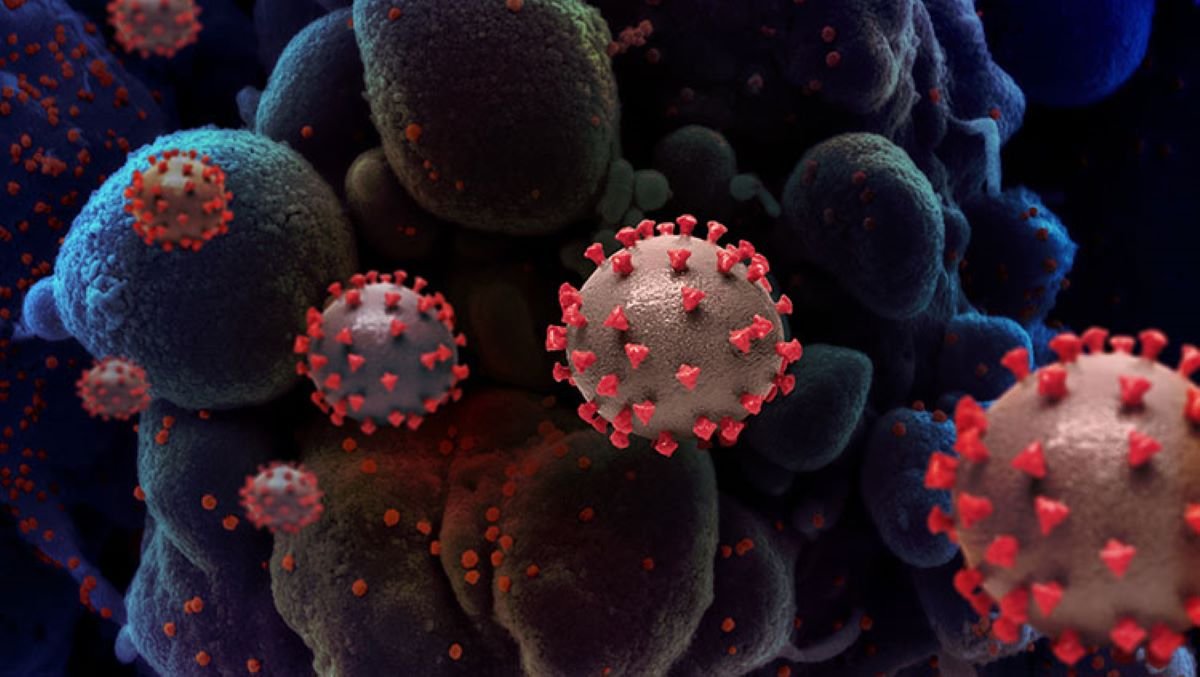
The outbreak of Severe Acute Respiratory Syndrome coronavirus 2 (SARS-CoV-2) has ushered in the unprecedented COVID-19 pandemic. Understanding the virus and its effects on the body, particularly the nervous system, is crucial in navigating these challenging times.
Introduction: Unveiling SARS-CoV-2 and COVID-19

Coronaviruses, typically linked to mild respiratory illnesses like the common cold, took an unexpected turn with the emergence of SARS-CoV-2, causing the global spread of COVID-19. This disease showcases a diverse range of symptoms, from mild discomfort to severe respiratory distress.
Neurological Impacts Unraveling the Connection
Research underscores that neurological symptoms associated with COVID-19 likely stem from the body’s immune response rather than direct viral invasion. Comprehensive studies analyzing cerebrospinal fluid have revealed the presence of antibodies, offering insights into the intricate interplay between the virus and neurological complications.
Immediate Effects on the Nervous System A Closer Look

While a significant proportion of individuals infected with SARS-CoV-2 experience mild symptoms, those requiring hospitalization often face brain-related complications. These can manifest as muscle aches, headaches, and, in severe cases, seizures or strokes. Understanding these immediate effects is paramount in providing holistic care to COVID-19 patients.
Vascular Complications and Blood Clots A Silent Threat
The virus’s interaction with receptors on blood vessel cells presents a silent threat, leading to vessel weakening, leakage, and microbleeds in the brain. Moreover, COVID-19 induces blood clot formation, heightening the risks of strokes, heart attacks, and organ damage. Maintaining optimal oxygen levels becomes imperative in preventing cognitive disorders and other severe consequences.
Recovery and Long Term Effects The Road to Healing
While a majority recover within weeks, a subset of individuals grapple with prolonged dysfunction across various body systems. The term “long COVID” encapsulates persistent symptoms, such as fatigue, cognitive difficulties, and pain. Recognizing and addressing these lingering effects is essential for promoting the well-being of those affected and informing future healthcare strategies.
Connection to Neurological Disorders Assessing Risk Factors
Individuals with pre-existing neurological conditions may confront an elevated risk of severe illness from COVID-19. Understanding the virus’s impact on the immune system emphasizes the need for vigilance in monitoring potential long-term complications, including stroke, dementia, and muscle and nerve damage.
Striking a Delicate Balance Navigating Neurological Safety in the Realm of COVID-19 Vaccines

In the current landscape of uncertainty, the COVID-19 vaccination stands out as a crucial tool in the prevention of severe illness. While the general consensus is that vaccines are safe, it’s essential to acknowledge that isolated instances of Guillain-Barre Syndrome have been associated with specific vaccine formulations.
The continuous vigilance exercised by authoritative bodies such as the Centers for Disease Control and Prevention (CDC) and the Food and Drug Administration (FDA) plays a pivotal role. This ongoing monitoring ensures that timely updates on vaccine safety are provided, effectively managing the delicate balance between safeguarding health and addressing potential risks.
The benefits of vaccination and the potential risks associated with certain formulations underscores the importance of remaining informed. Individuals are encouraged to stay abreast of the latest information from trusted health organizations, enabling them to make informed decisions about their well-being in the ongoing fight against COVID-19.
FOR MORE INTERESTING ARTICLES Transforming Heart Failure Care: Unveiling Abbott’s ARIES Trial Breakthrough with Aspirin-Free HeartMate 3
Conclusion
In the ever-changing landscape of the COVID-19 scenario, maintaining a well-informed perspective on the virus’s effects on the nervous system is of utmost importance. Building a strong foundation for comprehension involves identifying and applying pertinent keywords linked to SARS-CoV-2, COVID-19, and related subjects.
Amid the persistent challenges presented by COVID-19 globally, having a profound understanding of the virus’s impact on the nervous system becomes a source of empowerment for individuals, enabling them to make wise decisions about their health. The collective effort of staying informed and adhering to recommended guidelines allows us to collectively navigate the uncharted territories of this pandemic, striving towards a future characterized by improved health and unwavering resilience.
Medical Sciences
Nanodrones Against Cancer,UNIST’s Innovation Marks a New Era in Treatment
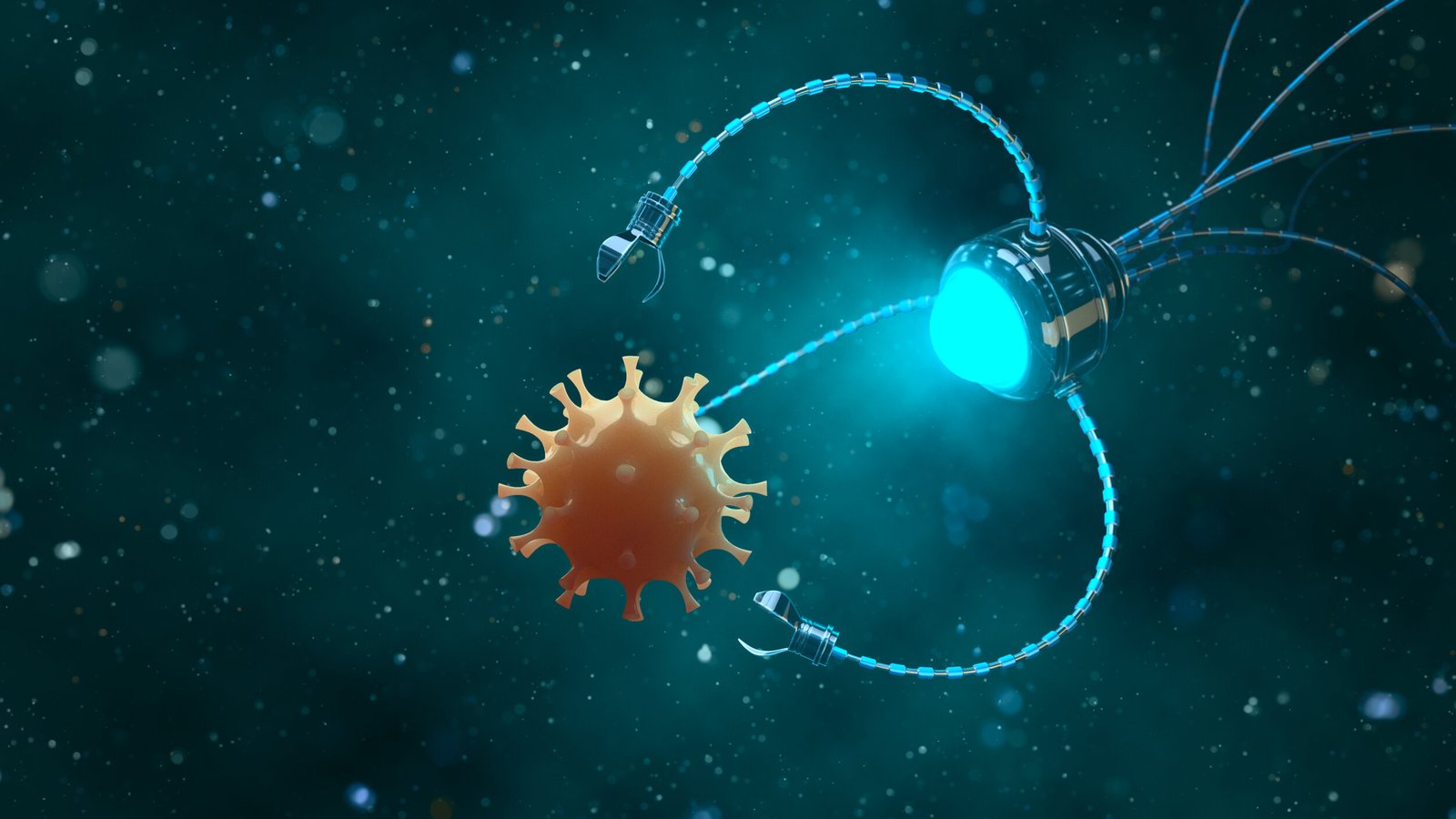
Game-Changer in Cancer Research: UNIST’s Nanodrones Take the Spotlight
In the realm of groundbreaking cancer treatment breakthroughs, the spotlight is now on the Ulsan National Institute of Science and Technology (UNIST), where a dynamic team of researchers has unveiled a potential game-changer. Imagine a world where tiny nanodrones, aptly named NK cell-engaging nanodrones (NKeNDs), take center stage in the fight against cancer.
RELATED ARTICLE New revolutionary nanodrones enable targeted cancer treatment
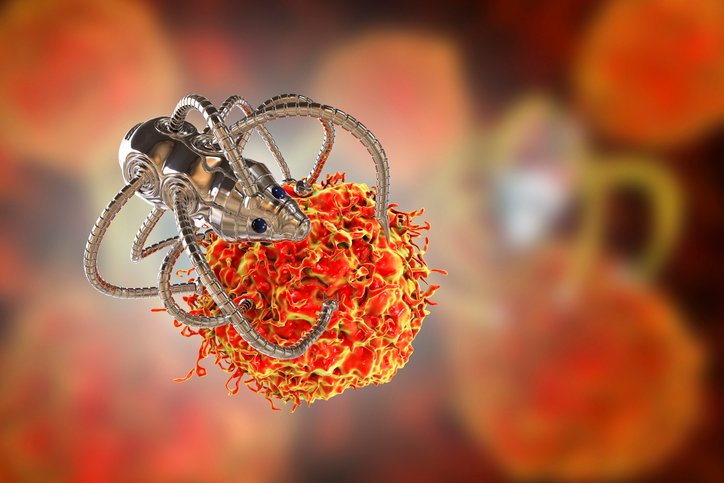
Led by the innovative minds of Professors Sebyung Kang and Sung Ho Park from the Department of Biological Sciences, this team has cracked the code to revolutionize cancer treatment. These nanodrones, far from the futuristic sci-fi portrayals, are engineered to specifically target and obliterate cancer cells, marking a significant leap forward in the battle against this relentless disease.

At the heart of this breakthrough lies the ability of these nanodrones to engage natural killer (NK) cells, the body’s frontline soldiers against cancer. What sets the NKeNDs apart is their precision – think of them as nanoscale guided missiles homing in on cancer cells with unparalleled accuracy. The secret sauce involves utilizing AaLS protein cage nanoparticles as the foundation for these nanodrones, incorporating specific cancer-targeting and NK cell-recruiting ligands, aptly named HER2 @NKeND and EGFR@NKeND.
Lab tests have showcased the remarkable ability of these nanodrones to selectively bind to various types of cancer cells while rallying NK cells to mount a defense against the invaders. The real breakthrough emerged during mice trials, where administering HER2 @NKeNDs alongside human immune cells resulted in a significant slowdown in tumor growth, all without adverse effects.

Professor Kang Se-byung, brimming with excitement, highlighted the potential for customizing treatments for different cancers using these NK cell delivery nanodrones. It’s not merely about targeting cancer cells; it’s about doing so with surgical precision, minimizing collateral damage and maximizing the impact of the body’s immune system.
MORE LATEST ARTICLE Brain Clot Revolution, Vortex Ultrasound Tornado in Brain Health
This groundbreaking study, published in Nano Today, marks a pivotal moment in scientific progress. With the support of various institutions dedicated to advancing knowledge, the door to a new era in cancer treatment swings wide open. Nanodrones may just be the superheroes we’ve been yearning for, offering hope and resilience in the face of one of humanity’s most formidable adversaries. As we raise a toast to science and innovation, the journey towards conquering cancer takes a remarkable leap forward. Cheers to the heroes of the microscopic world.
-
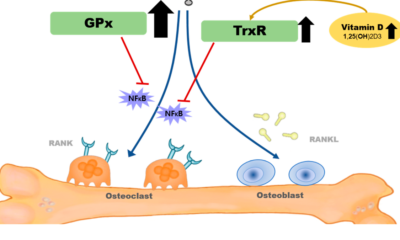
 Medical Sciences8 months ago
Medical Sciences8 months agoSelenium Nanoparticles Redefining Postmenopausal Osteoporosis Treatment with a Novel Approach
-

 Medical Sciences8 months ago
Medical Sciences8 months agoTransforming Heart Failure Care: Unveiling Abbott’s ARIES Trial Breakthrough with Aspirin-Free HeartMate 3
-
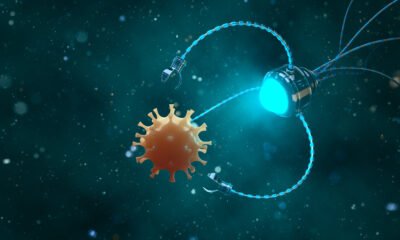
 Medical Sciences7 months ago
Medical Sciences7 months agoNanodrones Against Cancer,UNIST’s Innovation Marks a New Era in Treatment
-

 Medical Sciences8 months ago
Medical Sciences8 months agoGeriatric Care in the Face of Non-ST Elevated Myocardial Infarction and Acute Coronary Syndrome
-

 Blog8 months ago
Blog8 months agoUK’s Milestone In Genetic Medicine,CRISPR Therapy Treating Sickle-Cell Disease and β-Thalassaemia
-

 Medical Research8 months ago
Medical Research8 months agoA New Chapter in Vision Restoration By Rebuilding Retinal Ganglion Cells
-

 Blog8 months ago
Blog8 months agoCutting-Edge Diagnostic Technology Handheld Device for Alzheimer’s and Parkinson’s Diseases
-

 Blog8 months ago
Blog8 months agoNewborn Hearing Screening Can Improve Reading Proficiency Skills
